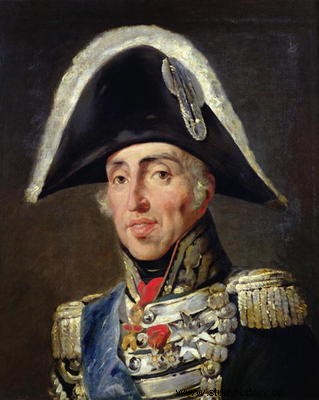Grandson of Louis XV, Charles X, then Count of Artois, had to leave the country after the storming of the Bastille. During his emigration to England, he took part in the counter-revolutionary struggle and tried to unite the European emigrant forces against the French revolutionary regime.
Recognized as lieutenant general of the kingdom by the Senate on his return to France in 1814, he led the ultra-royalist party and opposed the moderate policies of his brother, Louis XVIII. He ascended the throne on the latter's death in 1824.
Despite his status as a constitutional sovereign, therefore subject to the respect of the constitutional charter of 1815, his reign tends to revive previous monarchical traditions. He was consecrated in Reims in 1825 and gradually suppressed the gains of the Revolution through the successive ministries of Villèle, Montignac and Polignac.
The success of the Algiers expedition did not reduce the unpopularity of this king, which reached its climax during the promulgation of the Saint-Cloud ordinances on July 25, 1830, thus suppressing the freedom of the press and modifying the electoral law. . This led to a popular uprising on July 27, 28 and 29 (July Revolution). Forced to abdicate on August 2, 1830, he went into exile in England and then in Scotland, before dying in Italy. His fall marked the end of Bourbon rule in France.
1757 - 1836

Status
King of France
